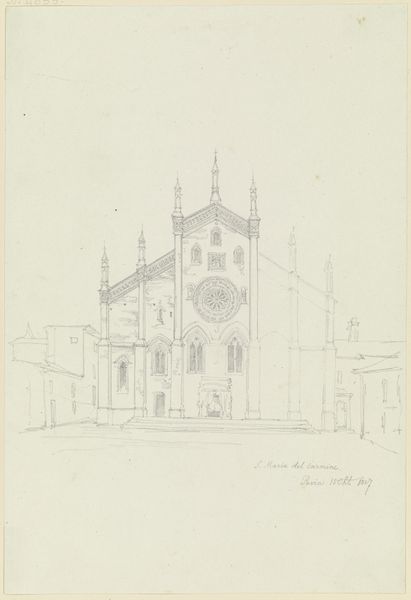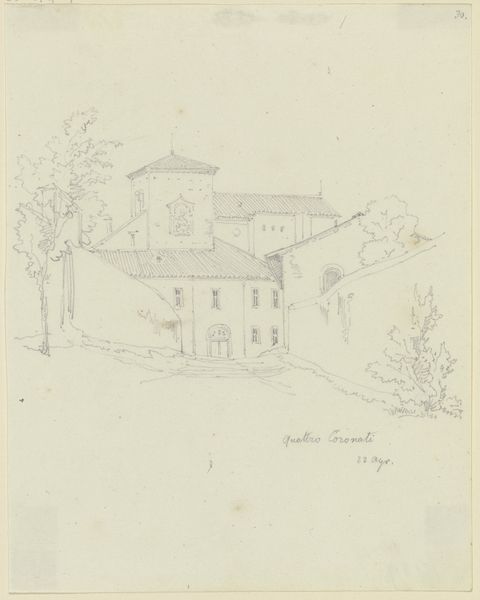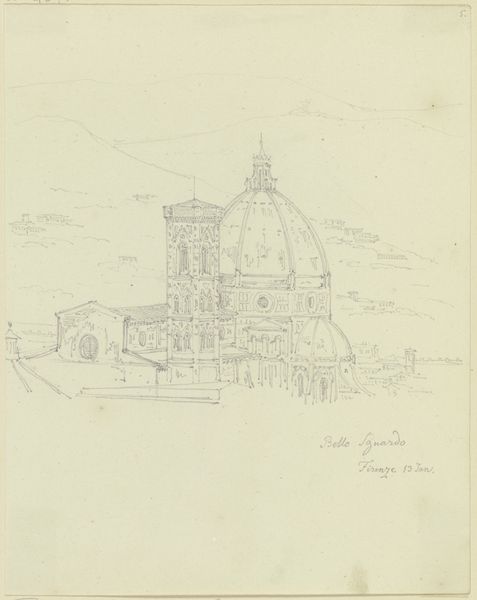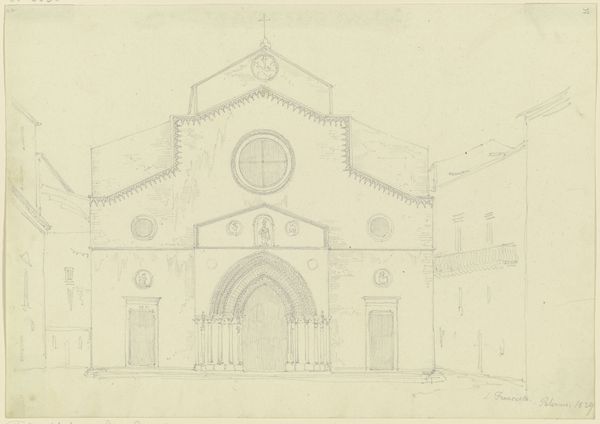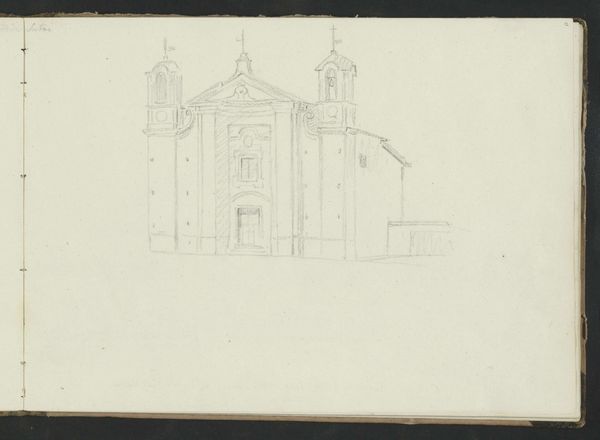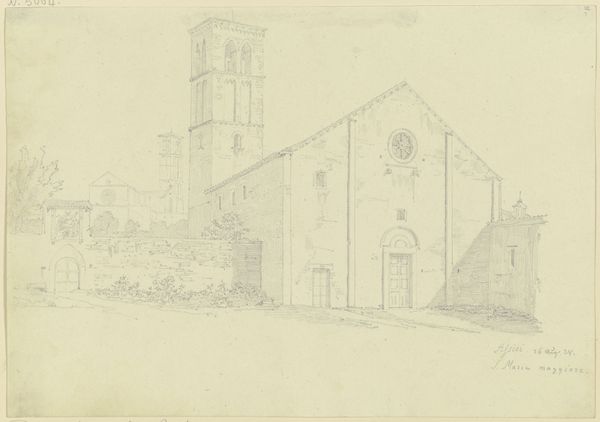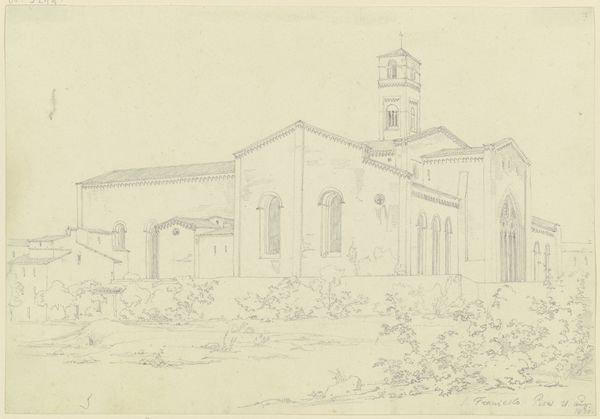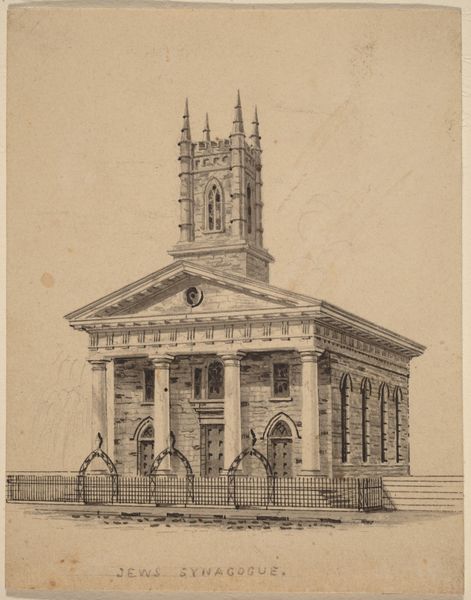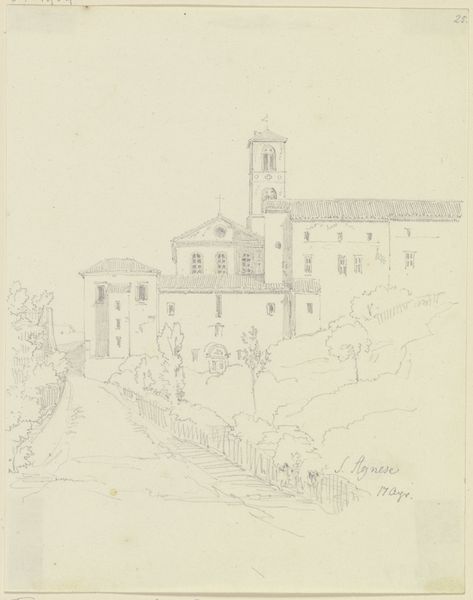
Copyright: Public Domain
Curator: This meticulous drawing, created between 1824 and 1828 by Friedrich Maximilian Hessemer, presents S. Giorgio in Velabro, Rome, rendered in pencil on paper. Hessemer, a German architect and artist, captures the Romanesque church with a neoclassical precision. Editor: My first thought is...delicate. It's almost ethereal, like a memory sketched onto the page. The detail is incredible, but it’s the lightness of touch that really strikes me. You can almost feel the Roman sun washing over the stone. Curator: Indeed. It reflects the Neoclassical interest in accurate representation and the rediscovery of classical forms in architectural studies. Architectural drawings such as these had a key function at the time for the rise of art history as a scientific discipline. Editor: Right, I see that now. There’s something really scientific about the perspective and the even light—like a botanist carefully illustrating a flower, except it's stone and faith that are carefully preserved here, not petals and pollen. But there is also the absence of life; no people animate the space, emphasizing the solitude. Curator: That absence certainly allows the viewer to focus on the architectural elements, something in line with the pedagogical function of these representations for architecture students. But you’re also right. By stripping the scene of people, it highlights both the physical space and the enduring presence of the institution of the church itself. Editor: It's a dance, isn’t it? Between observation and… well, reverence. It's technical, sure, but I can feel a subtle sense of awe humming beneath those neat lines. To capture something so monumental on such a small, intimate scale—that’s artistry, whatever its intended function! Curator: Yes, Hessemer’s drawing here reveals not just the architecture of the church, but also the way buildings have been represented in relation to power, religion, and art. Editor: It almost invites you to enter the space. Not just physically, but conceptually—to consider its role, its story. Curator: Absolutely. A remarkable glimpse into a place, and an era, perceived through a meticulously trained eye. Editor: It’s like looking through time. Hessemer documented this, and now we get to reflect on it.
Comments
No comments
Be the first to comment and join the conversation on the ultimate creative platform.


